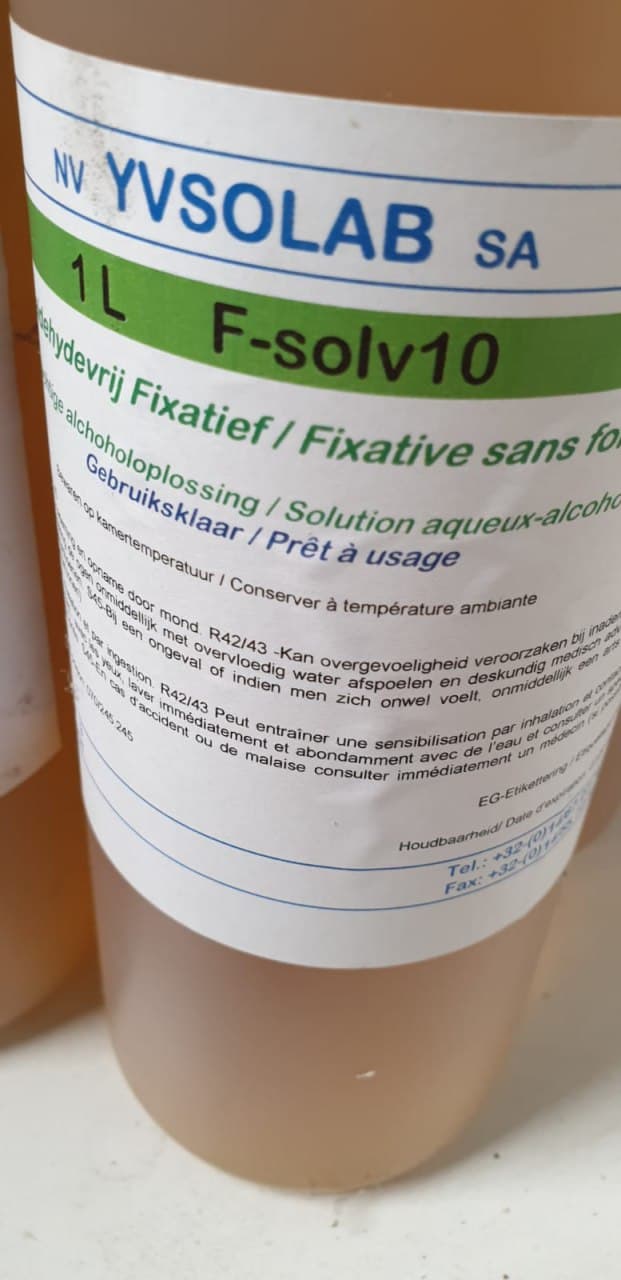Three units of conserved nucleotides in 23 rRNA are shielded from chemical probes by binding of tRNA to the ribosomal A, P, and E websites, respectively. They are situated nearly solely in area V, primarily in or adjoining to the loop recognized with the peptidyl transferase operate. Some of these websites are additionally protected by antibiotics equivalent to chloramphenicol, which might clarify how these medicine intervene with protein synthesis. Certain tRNA-dependent protections are abolished when the 3′-terminal A or CA or 2′,3′-linked acyl group is eliminated, offering direct proof for the interplay of the conserved CCA terminus of tRNA with 23S rRNA.
When the EF-Tu.GTP.aminoacyl-tRNA ternary advanced is sure to the ribosome, no tRNA-dependent A web site protections are detected in 23S rRNA till EF-Tu is launched. Thus, EF-Tu prevents interplay of the 3′ terminus of the incoming aminoacyl-tRNA with the peptidyl transferase area of the ribosome throughout anticodon choice, thereby allowing translational proofreading. Some PLTS cells appeared to have two axonal origins from the somata and dendrites. LA cells had been principally massive aspiny cells with Ca(2+)-dependent long-lasting afterhyperpolarizations and robust time-dependent hyperpolarizing rectification.
Plants have advanced subtle programs to manage with herbivore challenges. When vegetation understand herbivore-derived bodily and chemical cues, equivalent to elicitors in bugs’ oral secretions and compounds in oviposition fluids, vegetation dramatically reshape their transcriptomes, proteomes, and metabolomes. All these herbivory-induced modifications are mediated by elaborate signaling networks, which embrace receptors/sensors, Ca(2+) influxes, kinase cascades, reactive oxygen species, and phytohormone signaling pathways. Furthermore, herbivory induces protection responses not solely in the wounded areas but additionally in undamaged areas in the attacked leaves and in distal intact (systemic) leaves.
Here, we overview current progress in understanding plant notion of herbivory and oviposition, and the herbivory-induced early signaling occasions and their organic features. We think about the intraspecific phenotypic variety of plant responses to herbivory and focus on the underlying genetic variation. We additionally focus on new instruments and technical challenges in learning plant-herbivore interactions. Our outcomes point out that TRPA1 is an oxidant sensor in sensory neurons, initiating neuronal excitation and subsequent physiological responses in vitro and in vivo.
The impact of cyanide on the efflux of calcium from squid axons.
The common charge fixed for loss of (45)Ca from an unpoisoned squid axon was 1.Eight x 10(-3) min(-1), similar to an efflux of 0.2 p-mole/cm(2) sec.2. The Ca efflux from unpoisoned axons was diminished if exterior calcium was changed with magnesium, or exterior sodium with lithium, choline or dextrose. Replacing each sodium and calcium diminished the efflux to about 40%.3. Cyanide triggered little quick change in Ca efflux however after 1(half of)-2(half of) hr the efflux elevated to 5-15 instances its regular worth. The impact was quickly reversed when cyanide was eliminated.4.
The giant Ca efflux into cyanide was diminished by an element of three when exterior calcium was changed with magnesium and by an extra issue of about six when exterior sodium was changed with lithium.5. The Ca efflux from each poisoned and unpoisoned axons had a Q(10) of 2-3, was not affected by ouabain and was vastly diminished by injecting ethyleneglycol bis (aminoethylether)-N,N’-tetra-acetic acid (EGTA).6. After injecting (45)Ca alongside the axis, the efflux of calcium reached its most rather more quickly in a cyanide-treated axon than in an unpoisoned axon.7. Pre-treatment with cyanide vastly elevated the charge at which calcium was misplaced from axoplasm extruded into flattened dialysis luggage.
The same impact was noticed when cyanide was utilized after extrusion.8. Replacing exterior sodium glutamate with potassium glutamate vastly diminished the loss of (45)Ca from intact axons poisoned with cyanide however had little impact on the loss from extruded axoplasm.9. The charge fixed for loss of the Ca EGTA advanced was about Three x 10(-5) min(-1) for intact axons and 2 x 10(-2) min(-1) for extruded axoplasm.10. A doable clarification of the cyanide impact is that, after poisoning, calcium ions are launched from a retailer and can then change at a better charge with exterior sodium or calcium.11. The experiments counsel that half of the calcium efflux could also be coupled to sodium entry.12. Theoretical equations for ;diffusion and chemical response in a cylinder’ are described in the Appendix.
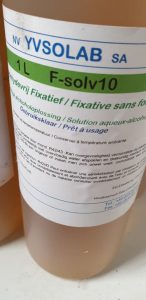
TRPA1 is a serious oxidant sensor in murine airway sensory neurons.
Sensory neurons in the airways are finely tuned to answer reactive chemical substances threatening airway operate and integrity. Nasal trigeminal nerve endings are significantly delicate to oxidants shaped in polluted air and throughout oxidative stress in addition to to chlorine, which is steadily launched in industrial and home accidents. Oxidant activation of airway neurons induces respiratory melancholy, nasal obstruction, sneezing, cough, and ache. While usually protecting, chemosensory airway reflexes can provoke extreme issues in sufferers affected by inflammatory airway circumstances like rhinitis and bronchial asthma.
 Caspase 9 antibody |
|
20R-2497 |
Fitzgerald |
50 ug |
EUR 269 |
|
|
|
Description: Rabbit polyclonal Caspase 9 antibody |
 Caspase 9 Antibody |
|
21422 |
SAB |
100ul |
EUR 319 |
 Caspase 9 Antibody |
|
21422-100ul |
SAB |
100ul |
EUR 302.4 |
 Caspase 9 Antibody |
|
21422-50ul |
SAB |
50ul |
EUR 224.4 |
 Caspase 9 antibody |
|
22978 |
SAB |
100ul |
EUR 479 |
 Caspase 9 antibody |
|
22978-100ul |
SAB |
100ul |
EUR 468 |
 Caspase 9 Antibody |
|
E021422 |
EnoGene |
100μg/100μl |
EUR 255 |
|
Description: Available in various conjugation types. |
 Caspase 9 Antibody |
|
E18-6348-1 |
EnoGene |
50μg/50μl |
EUR 145 |
|
Description: Available in various conjugation types. |
 Caspase 9 Antibody |
|
E18-6348-2 |
EnoGene |
100μg/100μl |
EUR 225 |
|
Description: Available in various conjugation types. |
 Caspase 9 Antibody |
|
E38PA1155 |
EnoGene |
100ul |
EUR 225 |
|
Description: Available in various conjugation types. |
 Caspase 9 Antibody |
|
E38PA1156 |
EnoGene |
100ul |
EUR 225 |
|
Description: Available in various conjugation types. |
 Caspase 9 Antibody |
|
E38PA3157 |
EnoGene |
100ul |
EUR 225 |
|
Description: Available in various conjugation types. |
 Caspase 9 Antibody |
|
E312193 |
EnoGene |
200ul |
EUR 275 |
|
Description: Available in various conjugation types. |
 Caspase 9 Antibody |
|
DF7048 |
Affbiotech |
200ul |
EUR 420 |
 Caspase 9 Antibody |
|
E38PA9134 |
EnoGene |
100ul |
EUR 225 |
|
Description: Available in various conjugation types. |
 Caspase 9 Antibody |
|
AF6348 |
Affbiotech |
200ul |
EUR 420 |
 Caspase 9 Antibody |
|
AF6870 |
Affbiotech |
100ul |
EUR 420 |
 Caspase 9 antibody |
|
70R-13511 |
Fitzgerald |
100 ul |
EUR 550 |
|
|
|
Description: Affinity purified Rabbit polyclonal Caspase 9 antibody |
 Caspase 9 antibody |
|
70R-14132 |
Fitzgerald |
100 ug |
EUR 519 |
|
|
|
Description: Affinity purified Rabbit polyclonal Caspase 9 antibody |
 Caspase 9 antibody |
|
70R-49474 |
Fitzgerald |
100 ul |
EUR 242 |
|
|
|
Description: Purified Polyclonal Caspase 9 antibody |
 Caspase 9 antibody |
|
70R-49475 |
Fitzgerald |
100 ul |
EUR 242 |
|
|
|
Description: Purified Polyclonal Caspase 9 antibody |
 Caspase 9 antibody |
|
70R-30659 |
Fitzgerald |
100 ug |
EUR 294 |
|
|
|
Description: Rabbit polyclonal Caspase 9 antibody |
 Caspase 9 antibody |
|
70R-31082 |
Fitzgerald |
100 ug |
EUR 294 |
|
|
|
Description: Rabbit polyclonal Caspase 9 antibody |
 Caspase 9 antibody |
|
70R-31083 |
Fitzgerald |
100 ug |
EUR 294 |
|
|
|
Description: Rabbit polyclonal Caspase 9 antibody |
 Caspase 9 antibody |
|
70R-31084 |
Fitzgerald |
100 ug |
EUR 294 |
|
|
|
Description: Rabbit polyclonal Caspase 9 antibody |
 Caspase 9 antibody |
|
70R-33457 |
Fitzgerald |
100 ug |
EUR 294 |
|
|
|
Description: Rabbit polyclonal Caspase 9 antibody |
 Caspase 9 antibody |
|
70R-33459 |
Fitzgerald |
100 ug |
EUR 294 |
|
|
|
Description: Rabbit polyclonal Caspase 9 antibody |
 Caspase 9 antibody |
|
70R-33461 |
Fitzgerald |
100 ug |
EUR 294 |
|
|
|
Description: Rabbit polyclonal Caspase 9 antibody |
 Caspase 9 antibody |
|
70R-11636 |
Fitzgerald |
100 ug |
EUR 357 |
|
|
|
Description: Rabbit polyclonal Caspase 9 antibody |
 Caspase 9 antibody |
|
70R-11806 |
Fitzgerald |
100 ug |
EUR 343 |
|
|
|
Description: Rabbit polyclonal Caspase 9 antibody |
 Caspase 9 antibody |
|
70R-51476 |
Fitzgerald |
100 ul |
EUR 242 |
|
|
|
Description: Purified Polyclonal Caspase 9 antibody |
 Caspase-9 Antibody |
|
6670-100 |
Biovision |
each |
EUR 405.6 |
 Caspase-9 Antibody |
|
6670-30T |
Biovision |
each |
EUR 175.2 |
 Caspase-9 Antibody |
|
2071-002mg |
ProSci |
0.02 mg |
EUR 206.18 |
|
|
|
Description: Caspase-9 Antibody: Apoptosis is related to many diseases and induced by a family of cell death receptors and their ligands. Cell death signals are transduced by death domain containing adapter molecules and members of the caspase family of proteases. A novel member in the caspase family was recently identified and designated ICE-LAP6, Mch6, and Apaf-3. Caspase-9 and Apaf-1 bind to each other, which leads to caspase-9 activation. Caspase-9 is also activated by granzyme B and CPP32. Activated caspase-9 cleaves and activates caspase-3 that is one of the key proteases, being responsible for the proteolytic cleavage of many key proteins in apoptosis. Caspase-9 play a central role in cell death induced by a wide variety of apoptosis activators including TNFα, TRAIL, anti-CD-95, FADD, and TRADD. Caspase-9 is expressed in a variety of human tissues. |
 Caspase-9 Antibody |
|
2071-01mg |
ProSci |
0.1 mg |
EUR 523.7 |
|
|
|
Description: Caspase-9 Antibody: Apoptosis is related to many diseases and induced by a family of cell death receptors and their ligands. Cell death signals are transduced by death domain containing adapter molecules and members of the caspase family of proteases. A novel member in the caspase family was recently identified and designated ICE-LAP6, Mch6, and Apaf-3. Caspase-9 and Apaf-1 bind to each other, which leads to caspase-9 activation. Caspase-9 is also activated by granzyme B and CPP32. Activated caspase-9 cleaves and activates caspase-3 that is one of the key proteases, being responsible for the proteolytic cleavage of many key proteins in apoptosis. Caspase-9 play a central role in cell death induced by a wide variety of apoptosis activators including TNFα, TRAIL, anti-CD-95, FADD, and TRADD. Caspase-9 is expressed in a variety of human tissues. |
 Caspase-9 Antibody |
|
2073-002mg |
ProSci |
0.02 mg |
EUR 206.18 |
|
|
|
Description: Caspase-9 Antibody: Apoptosis is related to many diseases and induced by a family of cell death receptors and their ligands. Cell death signals are transduced by death domain containing adapter molecules and members of the caspase family of proteases. A novel member in the caspase family was recently identified and designated ICE-LAP6, Mch6, and Apaf-3. Caspase-9 and Apaf-1 bind to each other, which leads to caspase-9 activation. Caspase-9 is also activated by granzyme B and CPP32. Activated caspase-9 cleaves and activates caspase-3 that is one of the key proteases, being responsible for the proteolytic cleavage of many key proteins in apoptosis. Caspase-9 play a central role in cell death induced by a wide variety of apoptosis activators including TNFα, TRAIL, anti-CD-95, FADD, and TRADD. Caspase-9 is expressed in a variety of human tissues. |
 Caspase-9 Antibody |
|
2073-01mg |
ProSci |
0.1 mg |
EUR 523.7 |
|
|
|
Description: Caspase-9 Antibody: Apoptosis is related to many diseases and induced by a family of cell death receptors and their ligands. Cell death signals are transduced by death domain containing adapter molecules and members of the caspase family of proteases. A novel member in the caspase family was recently identified and designated ICE-LAP6, Mch6, and Apaf-3. Caspase-9 and Apaf-1 bind to each other, which leads to caspase-9 activation. Caspase-9 is also activated by granzyme B and CPP32. Activated caspase-9 cleaves and activates caspase-3 that is one of the key proteases, being responsible for the proteolytic cleavage of many key proteins in apoptosis. Caspase-9 play a central role in cell death induced by a wide variety of apoptosis activators including TNFα, TRAIL, anti-CD-95, FADD, and TRADD. Caspase-9 is expressed in a variety of human tissues. |
 Caspase-9 Antibody |
|
24049 |
SAB |
100ul |
EUR 479 |
 Caspase-9 Antibody |
|
24049-100ul |
SAB |
100ul |
EUR 468 |
 Caspase-9 Antibody |
|
24050 |
SAB |
100ul |
EUR 479 |
 Caspase-9 Antibody |
|
24050-100ul |
SAB |
100ul |
EUR 468 |
 Caspase-9 Antibody |
|
3016-100 |
Biovision |
each |
EUR 405.6 |
 Caspase-9 Antibody |
|
3016-30T |
Biovision |
each |
EUR 175.2 |
 Caspase-9 Antibody |
|
3136-100 |
Biovision |
each |
EUR 392.4 |
 Caspase-9 Antibody |
|
3136-30T |
Biovision |
each |
EUR 175.2 |
 Caspase-9 Antibody |
|
3409-100 |
Biovision |
each |
EUR 379.2 |
 Caspase-9 Antibody |
|
3409-30T |
Biovision |
each |
EUR 175.2 |
 Caspase-9 Antibody |
|
48161 |
SAB |
100ul |
EUR 429 |
 Caspase-9 Antibody |
|
48161-100ul |
SAB |
100ul |
EUR 399.6 |
 Caspase-9 Antibody |
|
48161-50ul |
SAB |
50ul |
EUR 286.8 |
 Caspase-9 Antibody |
|
48687 |
SAB |
100ul |
EUR 499 |
 Caspase-9 Antibody |
|
48687-100ul |
SAB |
100ul |
EUR 399.6 |
 Caspase-9 Antibody |
|
48687-50ul |
SAB |
50ul |
EUR 286.8 |
 Caspase-9 Antibody |
|
49014 |
SAB |
100ul |
EUR 499 |
 Caspase-9 Antibody |
|
49014-100ul |
SAB |
100ul |
EUR 399.6 |
 Caspase-9 Antibody |
|
49014-50ul |
SAB |
50ul |
EUR 286.8 |
 Caspase-9 Antibody |
|
F50929-0.08ML |
NSJ Bioreagents |
0.08 ml |
EUR 140.25 |
|
|
|
Description: Caspase 9 is a member of the cysteine-aspartic acid protease (caspase) family. Sequential activation of caspases plays a central role in the execution-phase of cell apoptosis. Caspases exist as inactive proenzymes which undergo proteolytic processing at conserved aspartic residues to produce 2 subunits, large and small, that dimerize to form the active enzyme. This protein is processed by caspase APAF1; this step is thought to be one of the earliest in the caspase activation cascade. |
 Caspase-9 Antibody |
|
F50929-0.4ML |
NSJ Bioreagents |
0.4 ml |
EUR 322.15 |
|
|
|
Description: Caspase 9 is a member of the cysteine-aspartic acid protease (caspase) family. Sequential activation of caspases plays a central role in the execution-phase of cell apoptosis. Caspases exist as inactive proenzymes which undergo proteolytic processing at conserved aspartic residues to produce 2 subunits, large and small, that dimerize to form the active enzyme. This protein is processed by caspase APAF1; this step is thought to be one of the earliest in the caspase activation cascade. |
 Caspase-9 Antibody |
|
F50930-0.08ML |
NSJ Bioreagents |
0.08 ml |
EUR 140.25 |
|
|
|
Description: Caspase 9 is a member of the cysteine-aspartic acid protease (caspase) family. Sequential activation of caspases plays a central role in the execution-phase of cell apoptosis. Caspases exist as inactive proenzymes which undergo proteolytic processing at conserved aspartic residues to produce 2 subunits, large and small, that dimerize to form the active enzyme. This protein is processed by caspase APAF1; this step is thought to be one of the earliest in the caspase activation cascade. |
 Caspase-9 Antibody |
|
F50930-0.4ML |
NSJ Bioreagents |
0.4 ml |
EUR 322.15 |
|
|
|
Description: Caspase 9 is a member of the cysteine-aspartic acid protease (caspase) family. Sequential activation of caspases plays a central role in the execution-phase of cell apoptosis. Caspases exist as inactive proenzymes which undergo proteolytic processing at conserved aspartic residues to produce 2 subunits, large and small, that dimerize to form the active enzyme. This protein is processed by caspase APAF1; this step is thought to be one of the earliest in the caspase activation cascade. |
 Caspase-9 Antibody |
|
RQ6459 |
NSJ Bioreagents |
100ug |
EUR 356.15 |
|
|
|
Description: CASP9 is also known as MCH6 or APAF3. This gene encodes a member of the cysteine-aspartic acid protease (caspase) family. Sequential activation of caspases plays a central role in the execution-phase of cell apoptosis. Caspases exist as inactive proenzymes which undergo proteolytic processing at conserved aspartic residues to produce two subunits, large and small, that dimerize to form the active enzyme. This protein can undergo autoproteolytic processing and activation by the apoptosome, a protein complex of cytochrome c and the apoptotic peptidase activating factor 1; this step is thought to be one of the earliest in the caspase activation cascade. This protein is thought to play a central role in apoptosis and to be a tumor suppressor. Alternative splicing results in multiple transcript variants. |
 Caspase-9 Antibody |
|
RQ6974 |
NSJ Bioreagents |
100 ug |
EUR 356.15 |
|
|
|
Description: CASP9 is also known as MCH6 or APAF3. This gene encodes a member of the cysteine-aspartic acid protease (caspase) family. Sequential activation of caspases plays a central role in the execution-phase of cell apoptosis. Caspases exist as inactive proenzymes which undergo proteolytic processing at conserved aspartic residues to produce two subunits, large and small, that dimerize to form the active enzyme. This protein can undergo autoproteolytic processing and activation by the apoptosome, a protein complex of cytochrome c and the apoptotic peptidase activating factor 1; this step is thought to be one of the earliest in the caspase activation cascade. This protein is thought to play a central role in apoptosis and to be a tumor suppressor. Alternative splicing results in multiple transcript variants. |
 Caspase-9 Antibody |
|
R30673 |
NSJ Bioreagents |
100 ug |
EUR 356.15 |
|
|
Description: Caspase-9, also called APAF3, is an initiator caspase, encoded by the CASP9 gene. The gene is mapped to chromosome 1p36.3-p36.1 by FISH. CASP9 is identified as a member of the caspase family that participates in CASP3 activation in vitro. And it also regarded as the most upstream member of the apoptotic protease cascade that is triggered by Cytochrome C and dATP. The crystal structure of CASP9 is complex with the BIR3 in an inhibitory domain of XIAP at 2.4-angstrom resolution and the gene contains 9 exons and spans approximately 35 kb of genomic DNA. Caspase-9 and APAF1 bind to each other via their respective NH2-terminal CED-3 homologous domains in the presence of Cytochrome C and dATP, an event that leads to CASP9 activation. Activity increases dramatically upon association with the apoptosome complex. And the majority of CASP9 knockout mice died perinatally with a markedly enlarged and malformed cerebrum caused by reduced apoptosis during brain development. |
 Caspase-9 Antibody |
|
R31745 |
NSJ Bioreagents |
100 ug |
EUR 356.15 |
|
|
Description: Caspase-9 is also known as MCH6 or APAF3. The CASP9 gene encodes a member of the cysteine-aspartic acid protease family. Sequential activation of caspases plays a central role in the execution-phase of cell apoptosis. Caspases exist as inactive proenzymes which undergo proteolytic processing at conserved aspartic residues to produce two subunits, large and small, that dimerize to form the active enzyme. This protein can undergo autoproteolytic processing and activation by the apoptosome, a protein complex of Cytochrome Cand the Apoptotic peptidase activating factor 1. This step is thought to be one of the earliest in the caspase activation cascade. This protein is thought to play a central role in apoptosis and to be a tumor suppressor. Alternative splicing results in multiple transcript variants. |
 pro Caspase 9 Antibody |
|
49230 |
SAB |
100ul |
EUR 499 |
 pro Caspase 9 Antibody |
|
49230-100ul |
SAB |
100ul |
EUR 399.6 |
 pro Caspase 9 Antibody |
|
49230-50ul |
SAB |
50ul |
EUR 286.8 |
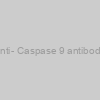 anti- Caspase 9 antibody |
|
FNab01295 |
FN Test |
100µg |
EUR 606.3 |
|
|
|
Description: Antibody raised against Caspase 9 |
 anti- Caspase 9 antibody |
|
FNab01296 |
FN Test |
100µg |
EUR 606.3 |
|
|
|
Description: Antibody raised against Caspase 9 |
 anti- Caspase 9 antibody |
|
FNab01297 |
FN Test |
100µg |
EUR 658.5 |
|
|
|
Description: Antibody raised against Caspase 9 |
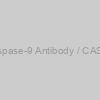 Caspase-9 Antibody / CASP9 |
|
RQ6371 |
NSJ Bioreagents |
100 ug |
EUR 356.15 |
|
|
|
Description: CASP9 is also known as MCH6 or APAF3. This gene encodes a member of the cysteine-aspartic acid protease (caspase) family. Sequential activation of caspases plays a central role in the execution-phase of cell apoptosis. Caspases exist as inactive proenzymes which undergo proteolytic processing at conserved aspartic residues to produce two subunits, large and small, that dimerize to form the active enzyme. This protein can undergo autoproteolytic processing and activation by the apoptosome, a protein complex of cytochrome c and the apoptotic peptidase activating factor 1; this step is thought to be one of the earliest in the caspase activation cascade. This protein is thought to play a central role in apoptosis and to be a tumor suppressor. Alternative splicing results in multiple transcript variants. |
) Caspase-9 Antibody (p35) |
|
RQ5798 |
NSJ Bioreagents |
100 ug |
EUR 356.15 |
|
|
|
Description: Caspase 9 is an enzyme that in humans is encoded by the CASP9 gene. This gene is part of a family of caspases, aspartate-specific cysteine proteases well studied for their involvement in immune and apoptosis signaling. This protein, the initiator caspase, is activated after cytochrome c release from mitochondria and targets downstream effectors. In mouse, deficiency of this gene can cause perinatal lethality. This protein may have a role in normal brain development. Alternative splicing results in multiple transcript variants that encode different protein isoforms. |
) Caspase 9 antibody (Thr125) |
|
70R-30658 |
Fitzgerald |
100 ug |
EUR 294 |
|
|
|
Description: Rabbit polyclonal Caspase 9 antibody (Thr125) |
) Caspase 9 antibody (Tyr153) |
|
70R-33456 |
Fitzgerald |
100 ug |
EUR 294 |
|
|
|
Description: Rabbit polyclonal Caspase 9 antibody (Tyr153) |
) Caspase 9 antibody (Ser144) |
|
70R-33458 |
Fitzgerald |
100 ug |
EUR 294 |
|
|
|
Description: Rabbit polyclonal Caspase 9 antibody (Ser144) |
) Caspase 9 antibody (Ser196) |
|
70R-33460 |
Fitzgerald |
100 ug |
EUR 294 |
|
|
|
Description: Rabbit polyclonal Caspase 9 antibody (Ser196) |
 Active Caspase 9 antibody |
|
70R-11648 |
Fitzgerald |
100 ug |
EUR 567 |
|
|
|
Description: Rabbit polyclonal Active Caspase 9 antibody |
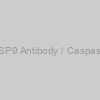 CASP9 Antibody / Caspase-9 |
|
RQ6457 |
NSJ Bioreagents |
100 ug |
EUR 356.15 |
|
|
|
Description: CASP9 is also known as MCH6 or APAF3. This gene encodes a member of the cysteine-aspartic acid protease (caspase) family. Sequential activation of caspases plays a central role in the execution-phase of cell apoptosis. Caspases exist as inactive proenzymes which undergo proteolytic processing at conserved aspartic residues to produce two subunits, large and small, that dimerize to form the active enzyme. This protein can undergo autoproteolytic processing and activation by the apoptosome, a protein complex of cytochrome c and the apoptotic peptidase activating factor 1; this step is thought to be one of the earliest in the caspase activation cascade. This protein is thought to play a central role in apoptosis and to be a tumor suppressor. Alternative splicing results in multiple transcript variants. |
 Antibody) Caspase-9 (CASP9) Antibody |
|
abx402516-100g |
Abbexa |
100 µg |
EUR 287.5 |
 Antibody) Caspase-9 (CASP9) Antibody |
|
abx341406-100l |
Abbexa |
100 µl |
EUR 350 |
 Antibody) Caspase-9 (CASP9) Antibody |
|
abx341406-50l |
Abbexa |
50 µl |
EUR 250 |
 Polyclonal Caspase-9 Antibody |
|
APR00030G |
Leading Biology |
0.1mg |
EUR 580.8 |
|
Description: A polyclonal antibody raised in Rabbit that recognizes and binds to Human Caspase-9 . This antibody is tested and proven to work in the following applications: |
 Polyclonal Caspase-9 Antibody |
|
APR00097G |
Leading Biology |
0.1mg |
EUR 580.8 |
|
Description: A polyclonal antibody raised in Rabbit that recognizes and binds to Human Caspase-9 . This antibody is tested and proven to work in the following applications: |
 Polyclonal Caspase-9 Antibody |
|
APG02416G |
Leading Biology |
0.1mg |
EUR 580.8 |
|
Description: A polyclonal antibody raised in Rabbit that recognizes and binds to Human Caspase-9 . This antibody is tested and proven to work in the following applications: |
 Polyclonal Caspase-9 Antibody |
|
APG02417G |
Leading Biology |
0.1 mg |
EUR 790.8 |
|
Description: A polyclonal antibody raised in Rabbit that recognizes and binds to Human Caspase-9 . This antibody is tested and proven to work in the following applications: |
 Polyclonal Caspase-9 Antibody |
|
APG02418G |
Leading Biology |
0.1 mg |
EUR 790.8 |
|
Description: A polyclonal antibody raised in Rabbit that recognizes and binds to Human Caspase-9 . This antibody is tested and proven to work in the following applications: |
 Polyclonal Caspase-9 Antibody |
|
APG02419G |
Leading Biology |
0.1ml |
EUR 580.8 |
|
Description: A polyclonal antibody raised in Rabbit that recognizes and binds to Human Caspase-9 . This antibody is tested and proven to work in the following applications: |
 Monoclonal Caspase-9 Antibody |
|
APG02420G |
Leading Biology |
0.1ml |
EUR 580.8 |
|
Description: A Monoclonal antibody against Human Caspase-9. The antibodies are raised in Mouse. This antibody is applicable in WB |
 Antibody) Caspase-9 (Active) Antibody |
|
3149-100 |
Biovision |
each |
EUR 614.4 |
 Antibody) Caspase 9 (CASP9) Antibody |
|
20-abx325040 |
Abbexa |
-
Ask for price
-
Ask for price
|
|
|
|
 Antibody) Caspase 9 (CASP9) Antibody |
|
20-abx325109 |
Abbexa |
-
Ask for price
-
Ask for price
|
|
|
|
 Antibody) Caspase 9 (CASP9) Antibody |
|
20-abx329576 |
Abbexa |
-
Ask for price
-
Ask for price
|
|
|
|
 Antibody) Caspase 9 (CASP9) Antibody |
|
20-abx324591 |
Abbexa |
-
Ask for price
-
Ask for price
|
|
|
|
 Antibody) Caspase 9 (CASP9) Antibody |
|
20-abx324794 |
Abbexa |
-
Ask for price
-
Ask for price
|
|
|
|
 Antibody) Caspase 9 (CASP9) Antibody |
|
20-abx324822 |
Abbexa |
-
Ask for price
-
Ask for price
|
|
|
|
 Antibody) Caspase 9 (CASP9) Antibody |
|
20-abx330233 |
Abbexa |
-
Ask for price
-
Ask for price
|
|
|
|
 Antibody) Caspase 9 (CASP9) Antibody |
|
abx330458-100ul |
Abbexa |
100 ul |
EUR 510 |
|
|
 Antibody) Caspase 9 (CASP9) Antibody |
|
abx037417-100ug |
Abbexa |
100 ug |
EUR 469.2 |
|
|
 Antibody) Caspase 9 (CASP9) Antibody |
|
20-abx100471 |
Abbexa |
-
Ask for price
-
Ask for price
-
Ask for price
-
Ask for price
-
Ask for price
|
- 100 ug
- 10 ug
- 1 mg
- 200 ug
- 50 ug
|
|
|
 Antibody) Caspase 9 (CASP9) Antibody |
|
20-abx100472 |
Abbexa |
-
Ask for price
-
Ask for price
-
Ask for price
-
Ask for price
-
Ask for price
|
- 100 ug
- 10 ug
- 1 mg
- 200 ug
- 50 ug
|
|
|
 Antibody) Caspase 9 (CASP9) Antibody |
|
20-abx100473 |
Abbexa |
-
Ask for price
-
Ask for price
-
Ask for price
-
Ask for price
-
Ask for price
|
- 100 ug
- 10 ug
- 1 mg
- 200 ug
- 50 ug
|
|
|
 Antibody) Caspase 9 (CASP9) Antibody |
|
20-abx211450 |
Abbexa |
-
Ask for price
-
Ask for price
|
|
|
|
 Antibody) Caspase 9 (CASP9) Antibody |
|
20-abx212408 |
Abbexa |
-
Ask for price
-
Ask for price
|
|
|
|
 Antibody) Caspase 9 (CASP9) Antibody |
|
20-abx175721 |
Abbexa |
-
Ask for price
-
Ask for price
|
|
|
|
 Antibody) Caspase 9 (CASP9) Antibody |
|
20-abx171616 |
Abbexa |
-
Ask for price
-
Ask for price
-
Ask for price
-
Ask for price
-
Ask for price
|
- 100 ug
- 1 mg
- 200 ug
- 20 ug
- 50 ug
|
|
|
 Antibody) Caspase 9 (CASP9) Antibody |
|
20-abx171617 |
Abbexa |
-
Ask for price
-
Ask for price
|
|
|
|
 Antibody) Caspase 9 (CASP9) Antibody |
|
20-abx213116 |
Abbexa |
-
Ask for price
-
Ask for price
|
|
|
|
 Antibody) Caspase 9 (CASP9) Antibody |
|
20-abx123445 |
Abbexa |
-
Ask for price
-
Ask for price
-
Ask for price
-
Ask for price
|
- 100 ul
- 200 ul
- 20 ul
- 50 ul
|
|
|
 Antibody) Caspase 9 (CASP9) Antibody |
|
abx125415-50ul |
Abbexa |
50 ul |
EUR 493.2 |
|
|
 Antibody) Caspase 9 (CASP9) Antibody |
|
20-abx125612 |
Abbexa |
-
Ask for price
-
Ask for price
-
Ask for price
-
Ask for price
|
- 100 ul
- 200 ul
- 20 ul
- 50 ul
|
|
|
 Antibody) Caspase 9 (CASP9) Antibody |
|
20-abx128531 |
Abbexa |
-
Ask for price
-
Ask for price
-
Ask for price
-
Ask for price
-
Ask for price
|
- 100 ug
- 10 ug
- 1 mg
- 200 ug
- 50 ug
|
|
|
 Antibody) Caspase 9 (CASP9) Antibody |
|
20-abx128921 |
Abbexa |
-
Ask for price
-
Ask for price
-
Ask for price
-
Ask for price
-
Ask for price
|
- 100 ug
- 10 ug
- 1 mg
- 200 ug
- 50 ug
|
|
|
 Antibody) Caspase 9 (CASP9) Antibody |
|
abx231295-100ug |
Abbexa |
100 ug |
EUR 577.2 |
|
|
 Antibody) Caspase 9 (CASP9) Antibody |
|
abx231296-100ug |
Abbexa |
100 ug |
EUR 577.2 |
|
|
 Antibody) Caspase 9 (CASP9) Antibody |
|
abx231297-100ug |
Abbexa |
100 ug |
EUR 610.8 |
|
|
 Antibody) Caspase 9 (CASP9) Antibody |
|
20-abx111427 |
Abbexa |
-
Ask for price
-
Ask for price
|
|
|
|
 Antibody) Caspase 9 (CASP9) Antibody |
|
20-abx159358 |
Abbexa |
-
Ask for price
-
Ask for price
|
|
|
|
 Antibody) Caspase 9 (CASP9) Antibody |
|
20-abx136140 |
Abbexa |
-
Ask for price
-
Ask for price
-
Ask for price
|
|
|
|
 Antibody) Caspase 9 (CASP9) Antibody |
|
20-abx134447 |
Abbexa |
-
Ask for price
-
Ask for price
-
Ask for price
|
|
|
|
 Antibody) Caspase 9 (CASP9) Antibody |
|
20-abx007563 |
Abbexa |
-
Ask for price
-
Ask for price
-
Ask for price
|
|
|
|
 Antibody) Caspase 9 (CASP9) Antibody |
|
20-abx009495 |
Abbexa |
-
Ask for price
-
Ask for price
-
Ask for price
|
|
|
|
 Antibody) Caspase 9 (CASP9) Antibody |
|
20-abx009496 |
Abbexa |
-
Ask for price
-
Ask for price
-
Ask for price
|
|
|
|
 Antibody) Caspase 9 (CASP9) Antibody |
|
20-abx002046 |
Abbexa |
-
Ask for price
-
Ask for price
-
Ask for price
-
Ask for price
|
- 100 ul
- 200 ul
- 20 ul
- 50 ul
|
|
|
 Antibody) Caspase 9 (CASP9) Antibody |
|
abx033801-400ul |
Abbexa |
400 ul |
EUR 627.6 |
|
|
 Antibody) Caspase 9 (CASP9) Antibody |
|
abx033801-80l |
Abbexa |
80 µl |
EUR 343.2 |
|
|
 Antibody) Caspase 9 (CASP9) Antibody |
|
abx033802-400ul |
Abbexa |
400 ul |
EUR 627.6 |
|
|
 Antibody) Caspase 9 (CASP9) Antibody |
|
abx033802-80l |
Abbexa |
80 µl |
EUR 343.2 |
|
|
 Antibody) Caspase 9 (CASP9) Antibody |
|
abx002046-100l |
Abbexa |
100 µl |
EUR 387.5 |
 Antibody) Caspase 9 (CASP9) Antibody |
|
abx002046-20l |
Abbexa |
20 µl |
EUR 175 |
 Antibody) Caspase 9 (CASP9) Antibody |
|
abx002046-50l |
Abbexa |
50 µl |
EUR 275 |
 Antibody) Caspase 9 (CASP9) Antibody |
|
abx231295-100g |
Abbexa |
100 µg |
EUR 350 |
 Antibody) Caspase 9 (CASP9) Antibody |
|
abx231296-100g |
Abbexa |
100 µg |
EUR 350 |
 Antibody) Caspase 9 (CASP9) Antibody |
|
abx231297-100g |
Abbexa |
100 µg |
EUR 350 |
 Antibody) Caspase 9 (CASP9) Antibody |
|
abx243071-96tests |
Abbexa |
96 tests |
EUR 287.5 |
 Antibody) Caspase 9 (CASP9) Antibody |
|
abx037417-96tests |
Abbexa |
96 tests |
EUR 337.5 |
 Antibody) Caspase 9 (CASP9) Antibody |
|
abx128531-100l |
Abbexa |
100 µl |
EUR 250 |
Here, we confirmed that each hypochlorite, the oxidizing mediator of chlorine, and hydrogen peroxide, a reactive oxygen species, activated Ca(2+) inflow and membrane currents in an oxidant-sensitive subpopulation of chemosensory neurons. These responses have been absent in neurons from mice missing TRPA1, an ion channel of the transient receptor potential (TRP) gene household. TRPA1 channels have been strongly activated by hypochlorite and hydrogen peroxide in main sensory neurons and heterologous cells. In exams of respiratory operate, Trpa1(-/-) mice displayed profound deficiencies in hypochlorite- and hydrogen peroxide-induced respiratory melancholy in addition to decreased oxidant-induced ache conduct.


